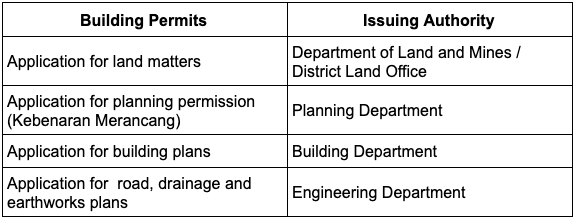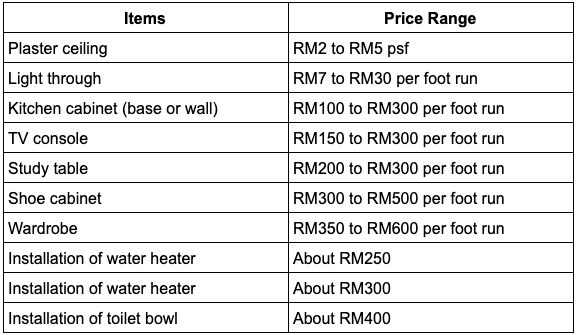
Constructing your own house is a far cry from buying a brand new home from a developer or even purchasing a resale property from an existing homeowner. While building your own home out of nothing is a courageous move, there are many things you need to consider.
For instance, you need to hire property professionals and obtain building permits from the local authorities. In this guide, we listed the important steps you need to undertake for constructing your very own house. But before carrying out this move, here are three crucial things you must keep in mind:
1. Get familiar with the local housing and zoning rules, as well as the national building regulations.
2. Leverage on the Master Builders Association Malaysia (MBAM) when hiring veterans to build your home.
3. Ensure you engage a licensed architect, as you will depend on them not only for the blueprints but also for getting the Certificate of Completion and Compliance (CCC).
Now, without further ado, below are the 10 crucial steps you need to follow through for building your dream home.
I. Determine your Estimated Total Budget
This is the first and most important step as you need to build your home without breaking your bank account. For calculating building expenses, including the actual construction itself, paying the fees of property professionals, and installing fittings and fixtures, we relied on the Dutch design and engineering firm Arcadis, which published the “Construction Cost Handbook 2019 - Malaysia.”
The report provides a detailed summary of the building cost for different landed homes in the country. The figures were derived from fixed construction tender prices on the market as of the last quarter of 2018. To help you get a rough approximation on how much you will spend on building your home, we summarised the construction cost range from the report for Malaysia’s top five cities:

Notes:
A. The above figures are in RM per sf (psf)
B. The psf cost are based on construction floor areas, including outer premises like balconies, stairwells, water tanks and plant rooms.
C. It’s assumed that the homes are constructed on flat ground, with typical soil and site conditions. It’s also inferred that the houses don’t have basements.
D. The statistics are inclusive of cost for constructing the unit exterior and interior fit-outs only. These exclude land price, external works, site formation works, professional fees, loan related-fees and legal expenses.
Based on the above table, the construction cost (inclusive of basic fittings and fixtures) of a 1,000 sf terraced home in Kuala Lumpur ranges from RM85,000 to RM134,000, while a similar property in Penang will set you back by RM81,000 to RM123,000. But for a luxury detached house and bungalow, the price range is substantially more expensive.
II. Establish a Time Frame for Building Your Home
It can take about 12 to 24 months or more to finish building your property. This includes buying the land, hiring professionals, designing your home, finalising the architectural plans, getting a loan from a financial institution, and constructing the house itself. Ensure that your timeline meets your budget and take into account all the steps in building the house.
III. Hire a Team of Licensed Experts
To ensure the finished product is not only functional but also has good workmanship and a pleasing design, you will need to hire professionals such as:
Architect
This professional will create the design for both the exterior and interior of your home.
You need to tell him the particulars of the house you want to constructed, so he can create precise architectural plans. If he needs to produce the blueprint from scratch, you will need to pay him 5 to 10 percent of your overall building cost. But the rate can be lowered to around 2 percent if you already have existing architectural plans that is close to the design you want.
Surveyors
You will need to hire a land surveyor who accurately measures a property’s boundaries to prevent legal disputes in the future. Another is the building surveyor, who will be responsible for ensuring good workmanship, checking the quality of the building materials to be utilised, and compliance with construction laws and regulations. The surveyors must be duly recognised by the Royal Institution of Surveyor Malaysia (RISM).
Structural Engineer
This professional’s job is to ensure that the house will be durable and structurally sound.
Electricians and Plumbers
Their job is to design and install electrical and water system of your property.
Foreman/Builder
If you don’t have time to personally oversee the construction of your home, you can hire a foreman or builder who will manage all the construction activities for you and ensure your building timelines are met.
Attorney
A lawyer draw up all the necessary legal documents for you, such as approvals and permits. They can also advise you if the features of the home being built abides with the relevant laws. Moreover, as you will be working with many other professionals, an attorney can help you with any legal issues that could arise and prevent possible legal action and violation of the law.
IV. Buying an Appropriate Land Parcel
You need to purchase a land suitable for building a home. The soil should be tested to make sure it can support your property’s foundation.
Avoid land on steep slopes due to landslide risk, as well as those in danger of sinkholes and soil liquefaction. Also, steer clear of areas that are frequently flooded. Another thing to watch out for is the safety and security situation in the area. If you’re superstitious, you may also want to avoid land near inauspicious areas, like those with cemeteries and garbage dumps.
Once you’ve found a perfect piece of land for building your home, have your attorney check the sale and purchase agreement (SPA) and register your interest at your state’s Land and District Office. Please note that when buying a plot of land, you will need to pay a stamp duty on the Memorandum of Transfer (MoT). The stamp duty rates are indicated below:

V. Finalise the Architectural Blueprints
Before construction can proceed, your builders will need the completed architectural plans. Instruct your architect to make the blueprints as comprehensive as possible. Draft where you want the bedrooms, living room, and kitchen as well as passageways to be located. Also, tell your architect the look you want on your exteriors and interiors, plus how many windows you would like.
Please note that the architect won’t fully rely on your design inputs, as they also need to consider local housing and zoning rules. For instance, easements, as well as the mandated space between your home and your neighbours. The architect will also take into account natural lighting and the airflow in your home.
In addition, once you’ve approved the architectural plans, you cannot revise it later while construction is ongoing. Therefore, check the blueprints multiple times before finalising everything.
VI. Obtaining a Housing Loan from a Bank
With the finalised architectural plans and the construction site ready, it’s time to obtain financing to begin the construction. Please note that you have two options. The first is to get a loan that will only pay for the land, while the second covers not only the land, but also building costs, including labour expenses, as well as the costs for building materials and required approvals and permits.
If you have an excellent credit history with a lender and good credit score (CTOS and CCRIS), obtaining a loan is likely to be easy as long as you have cash on hand to pay for at least one-fourth of your estimated total construction cost. You can obtain a loan-to-value (LTV) ratio of 75 to 90 percent. You can get a greater LTV if your credit score is higher.
Lenders such as UOB, OCBC, Maybank, and Alliance Bank all offer credit facility for home construction. Depending on the bank, the loan’s interest rate ranges from 6 to 7 percent.
To expedite your loan application process, we advise you to prepare the following documents:
- Deed or title to the land
- Photos of the land from varying angles
- Land office’s consent document
- Architectural plans signed by an architect
- Summary of overall construction costs
- Architectural firm or builder’s profile and financial status
Once your loan is granted, you will be given 24 to 36 months to commence construction. You have the option of obtaining the money in stages, with the bank’s lending officer checking the work progress.
VII. Finalise Building Plans and Obtaining Necessary Permits
After you’ve gotten financial backing, you cannot just start building your home immediately, as you still need to get the required permits from the local government. These permits ensure that your building plans adhere to the planning and building standards established by the Housing Ministry and Department of Town and Country Planning.
The building plans to be submitted must be issued by a principal submitting person (PSP), such as an engineer, building draftsman, or architect.
There are different departments that issue these permits and there are also varying procedures for approving permits. You need to check with your local district council for the one that applies to your area. But for your reference, we listed the process used by the Kuala Pilah District Council (MDKP):

VIII. Readying the Land for Construction
Once you’ve obtained all the necessary building plans, you can finally hold the groundbreaking ceremony for your home. But before that, you need to prepare the construction site by:
- Putting up a storage area for tools and building materials
- Set up resting places and toilets for the construction workers
- Levelling and grading the land
- Remove debris and unwanted plants, as well as tear down existing buildings
IX. Choosing your Construction Materials & Designing the Interiors
The two most important factors for selecting construction materials is durability and costs. You want to ensure that your home will stand the test of time, but you also don’t want to exceed your budget. Another popular factor nowadays is the use of recycled and eco-friendly building materials.
To assist you in calculating how much you will spend on construction materials, kindly visit this online list of building materials and their unit prices.
Meanwhile, local interior design company, Qanvast, revealed that the cost for decorating your interiors depends on the property type and materials to be used. Please see tables below:

Below is the average cost for installing flooring and feature walls:

Lastly, here is the average price for miscellaneous interior works:

X. Getting the Certificate of Completion and Compliance (CCC)
This is the final step. Once your residence is completed, you cannot just move in as you still need to get the CCC, an important document proving that the property is safe and fit for occupation.
The CCC is issued by the local authorities or your principal submitting person (PSP), who are required to be licensed engineers, architects or building draughtsman. But before the document is granted, your home must obtain the following:
- Tenaga Nasional Bhd’s (TNB) confirmation for power connection
- Confirmation of water connection from the relevant water authority
- Confirmation of connection to sewage treatment facilities from Sewerage Services Department (JPP)
- Bomba’s fire safety confirmation
- Elevator clearance from Department of Occupational Safety and Health (if applicable)
There you have it, that’s all the essential steps for constructing your own home in Malaysia.
For more guides like this, visit PropSocial's discussion page.
(Written by G. Zizan, 7th January 2020)
